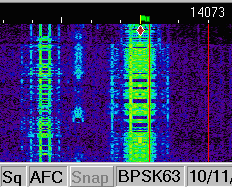 |
| Map of "Media Freedom" received via Fldigi during the VOA Radiogram |
Nowadays, the truth is, you don't need a new radio, just a computer (or Android tablet or phone) and you CAN receive pictures with your radio. And while fellow hams may protest that this is nothing new (and they're right) what is new is seriousness with which the U.S. government is taking it.
 |
| Photo for a story on "eRadiators" received via Fldigi during the VOA Radiogram |
Anyone with a $10 SDR dongle (made in China by the millions), a computer, tablet or smartphone, and a free piece of software called Fldigi, can receive the VOA's Radiogram as well as the accompanying pictures.
The government is excited about this "new" project because it allows the VOA to send news, information and even graphics or photos to anywhere on the planet, especially places where the internet is severely censored or even blocked by oppressive regimes. What's more, the text or photos can be printed and distributed to others who might not have access to the broadcast, but less a "free press."
I recently received one of the VOA's Radiograms, including the photos. The lead story discussed a recent report detailing the state of the media in countries around the globe and graded each nation on the amount of "freedom" it allows its media. Here's the weekly VOA Radiogram schedule. I've included a couple of the pictures I received.






